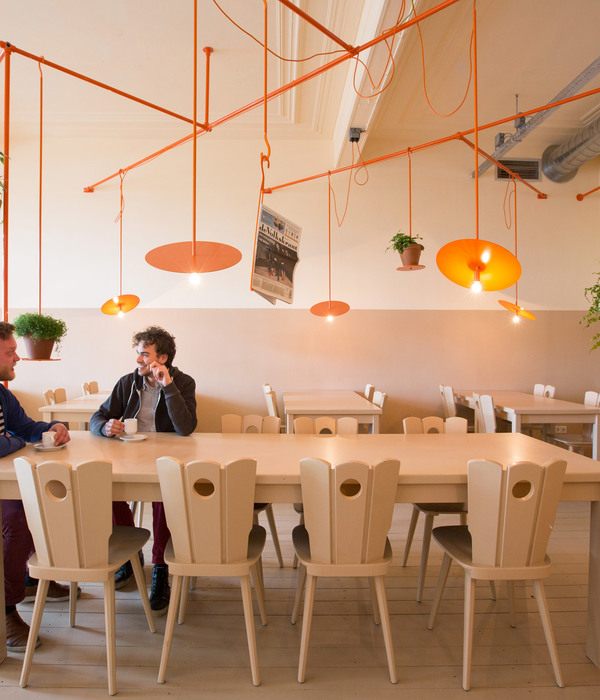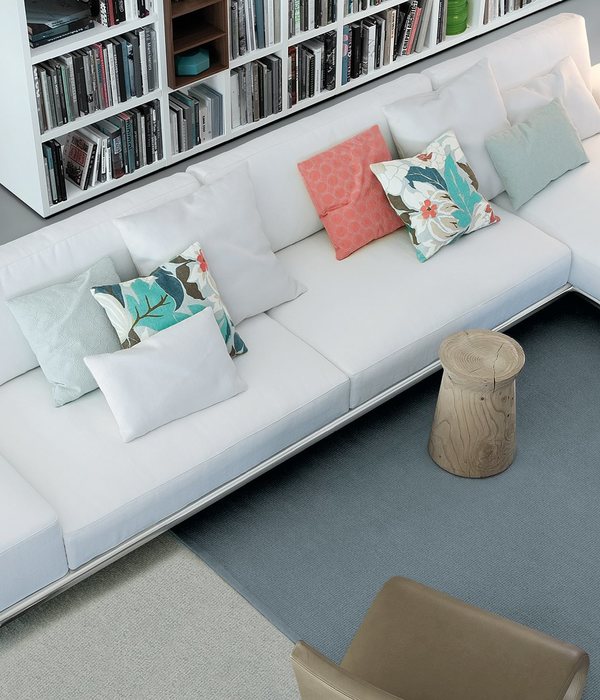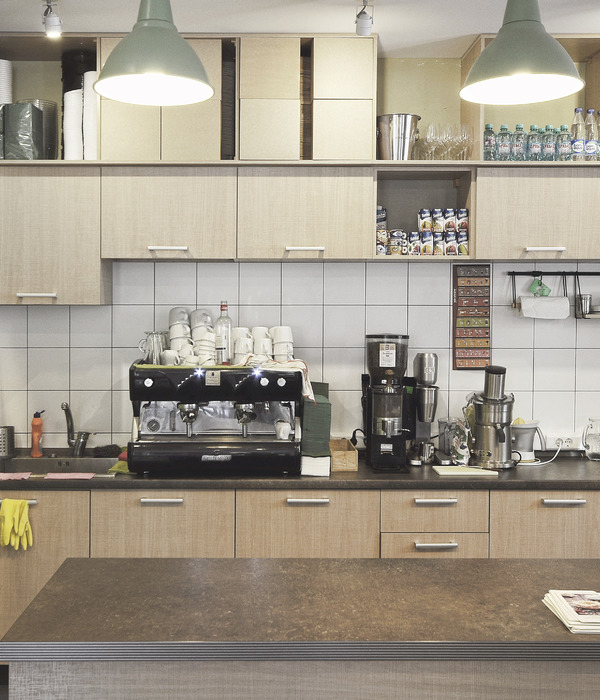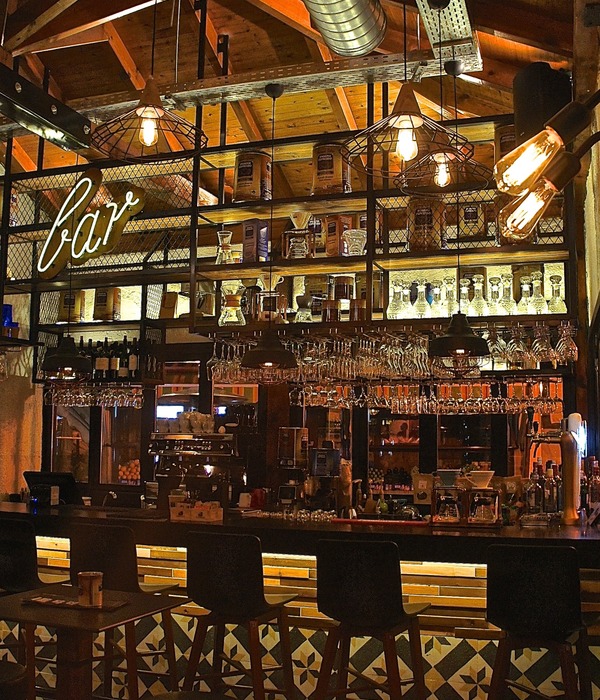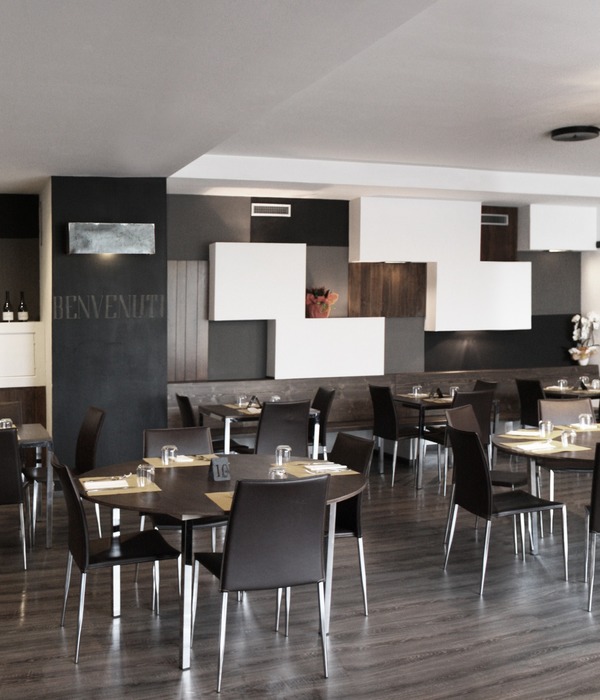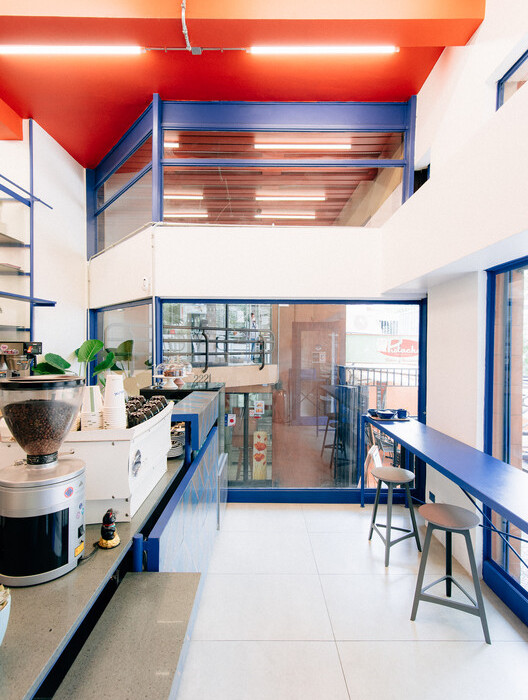- 项目名称:翁暖茶馆
- 设计方:TTD广州本至设计事务所
- 完成年份:2021年
- 客户:广州翁暖文化传播有限公司
- 施工单位:广州市金舟装饰设计有限公司
珠江之畔,有茶馆名翁暖,得都市之便,而无都市之喧嚣。茶馆内分“茶”、“餐”、“学”三大空间。可品茗用餐、焚香泼墨,宜独处静思、会友交心,得视听味觉之乐,抛体肤心灵之乏。
On the Bank of the Pearl River, there is a teahouse named Weng Nuan, which is convenient for the city without the noise of the city. The teahouse is divided into three spaces: “tea”, “meal” and “learning”. You can enjoy tea, eat, burn incense and splash ink. You should be alone, meditate, meet friends and make friends, get the music of audio-visual taste, and throw away the lack of body, skin and soul.
01
前厅/lobby
设计师以建构的手法,打破千篇一律的对称,盒子与空间其他界面的色块与材质的区分,原木花雕的使用,使空间寻得经典与当代的平衡。
By means of construction, the designer breaks the stereotyped symmetry, distinguishes the color blocks and materials between the box and other interfaces of the space, and uses log flower carvings to find a balance between classic and contemporary space. 留白,更凸显聚焦。
Leave blank to highlight the focus.
原木的天然纹理质感和年代感,更衬托出茶史之悠远。
The natural texture and sense of age of the logs set off the long history of tea.
由器及道,乃为茶史:九宫格置放历代的茶器,默默演绎茶文化发展历程。
The history of tea is based on utensils and Taoism: the tea utensils of the past dynasties are placed in the Jiugong grid to silently interpret the development process of tea culture.
02
茶空间
自唐从谂禅师尝以[吃茶去]接引学人之典故为始,唐人多喜煎茶,宋则以点茶为礼,茶艺经千年演变而自成一系。
Since the Tang Dynasty’s Zen master cong’e tasted the allusions of “eating tea” to attract scholars, the Tang people liked to fry tea, while the Song Dynasty took ordering tea as a ceremony. The tea art has evolved into a system after thousands of years
▲唐煎茶包厢/Tang fried tea box
▲宋点茶包厢/Song Dian tea box
木影暗动书生韵,茶香暗送钓诗钩,静室黯黯,茶烟袅袅,挥毫泼墨,以墨之五色比之于茶之六色,相得益彰。
The wood shadow moves the scholar’s rhyme, the tea fragrance sends the fishing poem hook, the quiet room is dark, the tea smoke curls, and the ink is splashed. The five colors of ink are compared with the six colors of tea, which complement each other.
03
茶空间通道
画以茶助兴,茶以画载道。
Tea is used in painting to help the fun, and tea is used in painting to carry the Tao.
04
餐空间·餐厅
[梦梁录]曰:盖人家每日不可阙者,柴米油盐酱醋茶。自宋朝开始,茶餐一体的理念,便融入茶文化。
[menglianglu] said: those who build people’s houses can’t live every day, firewood, rice, oil, salt, soy sauce, vinegar and tea. Since the Song Dynasty, the idea of integrating tea and meal has been integrated into tea culture.
灯光昏黄,绿意交错,光影浮动,暗香袅袅,在舌尖味蕾满足之余,再品一杯香茗,所谓偷得浮生,大概便是此意。
The light is dim, the green is crisscrossed, the light and shadow float, and the dark fragrance curls. While the taste buds at the tip of the tongue are satisfied, you can taste another cup of tea. This is probably the meaning of the so-called stealing floating life.
05
餐空间走廊
移步换景,此中式园林之精髓,烟雾氤氲下,山石竹影深浅摇曳,客人宛如身在园廊。
The essence of this Chinese garden is changing scenery step by step. Under the dense smoke, the shadow of mountains, stones and bamboo sways, and the guests are like in the garden corridor.
06
研学空间
曲径通达之处,乃茶研学空间,极目处仅见光线迷离,引人前行。
Where the winding path is accessible, it is the space for tea research and learning. At the far end, only the light is blurred, which leads people to move forward.
[研学空间]乃茶文化学习交流空间,以全息投影为载体,每逢开课之时,茶友熙熙,共话茶之传承和发展。
[research and study space] is a space for learning and exchange of tea culture. With holographic projection as the carrier, tea friends talk about the inheritance and development of tea at the beginning of the class.
▲轴测
▲手稿
项目信息——
项目名称:翁暖茶馆
设计方:TTD广州本至设计事务所
完成年份:2021年
主创及设计团队:张海曼(设计总监)、陈子辉(创意总监)、唐颖(软装总监)、冯仕明(深化总监)、邹勇锋、苏健科(深化设计)
项目地址:广东广州
建筑面积:1800㎡
摄影版权:再三感官视觉 Allen
客户(选填):广州翁暖文化传播有限公司
施工单位(选填):广州市金舟装饰设计有限公司
装修主材:肌理漆、不锈钢、原木花雕、亚克力、瓷砖
{{item.text_origin}}

